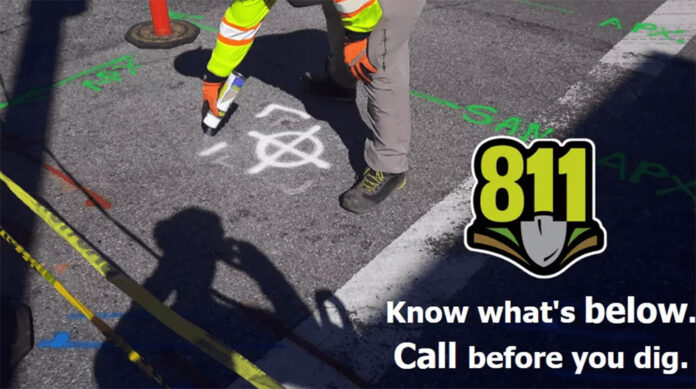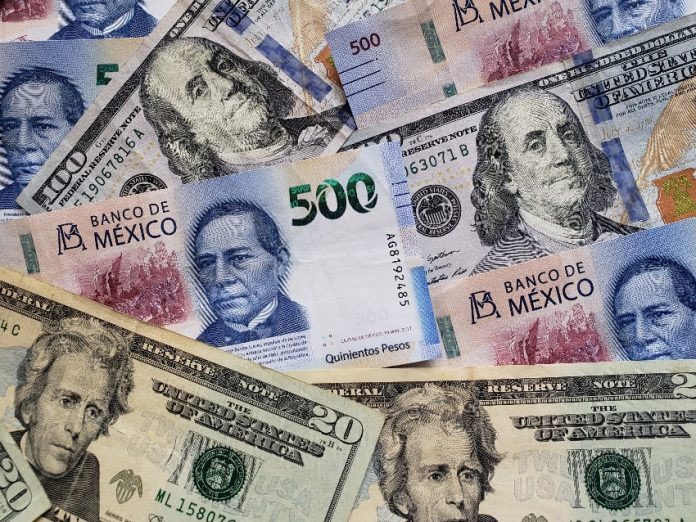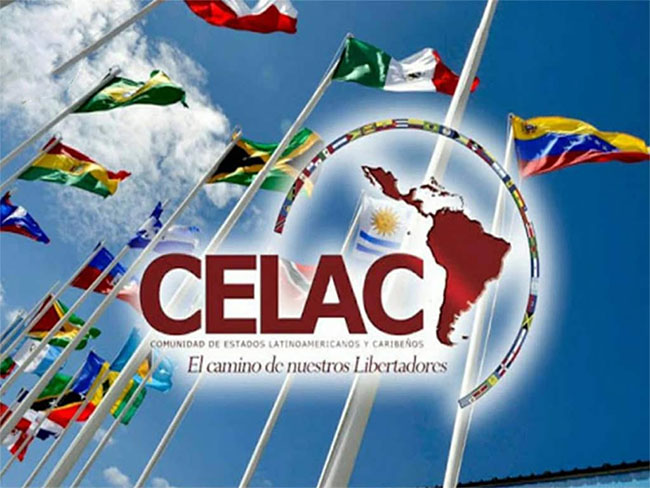NOTE FROM THE EDITOR:
The content of this article, authored by journalist James Corbett, does not reflect the view and opinion of El Reportero and its staff. It is published for entertainment and to explore diverse ideas. – Marvin Ramírez.
by Corbett |
Apr 7, 2024 – You’ll never guess what just happened. Politico published an article about a real solution!
Yes, an honest-to-goodness solution!
Shocking, isn’t it?
Even more shocking: it’s a solution that details how we can free ourselves from the clutches of the UN!
And the most shocking thing of all: this proposed solution isn’t a “don’t throw us in the briar patch” trick to get the public to back some alternative plan for global enslavement. It’s a solution that attacks the root of the problem and, by extension, threatens the globalist agenda itself.
Now, let’s not get carried away here. Naturally, the establishment lapdogs over at Politico have only reported on this solution in order to disparage the idea and those who are forwarding it. But still, to see an actual solution being discussed on a dinosaur media platform at all is itself an amazing development.
So, what on earth is going on here? Let’s put on our reading glasses and take a look.
If you exclusively follow mainstream news and establishment propaganda, you might have heard of the Paris Agreement, the accord adopted at the UN’s annual “Conference of the Parties” climate talks in Paris in 2015. And, if you do exclusively follow those sources of misinformation, then you’ll have some vague, woolly-headed idea that the Paris Agreement is a magical parchment that will—through some mystical process you can’t quite explain—placate the weather gods enough to limit future global temperature increases to 1.5°C (2.7°F).
If, however, you are a dedicated Corbett Reporteer, then you’ll know that:
But, like it or not, unless you happen to be a resident of Iran, Libya or Yemen—the only three nation-states on the planet that have not ratified this net zero death pledge—you are subject to this agreement.
Enter Trump. Back in 2017, Trump announced Washington’s withdrawal from the Paris Agreement. However, by a strange coincidence, the earliest date that the US could actually withdraw from the treaty was November 4, 2020, the day after the American presidential (s)election. And, as we all know, Sleepy Uncle Joe won the (s)election and promptly signed up the US to rejoin the agreement.
So, what lessons can we learn from this ordeal? Given the fact that this on-again, off-again withdrawal charade accomplished precisely nothing, how can we ensure that a subsequent withdrawal attempt actually works?
Well, we could choose to believe that the Orange Man is our MAGA saviour and, in order to end all climate nonsense forever, Americans will just have to vote even harder in 2024!
. . . But that is an aggressively stupid take, one which fundamentally misunderstands the reality of the situation and thus arrives at a “solution” that is no solution at all. Even if you believe Trump is actually against the globalists—which / is, needless / to / say, an / easily / demonstrable / lie—then the only thing that the US’ failed Paris withdrawal demonstrates is that what can be arbitrarily struck down by one president can be arbitrarily resurrected by another.
Imagine a universe in which the voting machines had declared Trump the winner in 2020 and the US withdrawal from the Paris Agreement had stuck. Americans would be in the exact same boat today that they were then: hoping that Trump’s appointed successor wins the next (s)election in order to keep the US out of Paris.
No, leaving the United States’—or any other country’s—participation in the climate scam up to the caprice of a would-be ruler’s whims is no solution at all.
So, how can the US exit Paris for good?
Enter Político.
Earlier this month, the Washington propaganda rag published an article on “How Trump could exit Paris—and make it stick,” which purports to reveal a new idea cooked up by “prominent conservatives”:
The idea, included in a 920-page policy report, is to pull the United States out of the 1992 treaty that underpins the Paris deal, known as the UN Framework Convention on Climate Change. That would be a serious step beyond what Trump did during his first term, when he exited the Paris Agreement but continued sending delegations to the annual UN climate talks.
While a president can unilaterally reenter the Paris deal (as President Joe Biden did), rejoining the underlying convention could require a two-thirds majority vote in the Senate — a tall order.
That “could” in the last sentence is doing a lot of heavy lifting, but for the time being let’s take the idea at face value: rejoining the UNFCCC after a withdrawal from that convention would require a (difficult to obtain) two-thirds majority Senate vote.
At first glance, proposing that the US withdraw from the UNFCCC seems like a refreshingly radical idea. (“Radical” as compared to the usual milquetoast platitudes and meaningless gestures that generally accompany American political campaigns, anyway.) No doubt, this suggestion is closer to being a solution to the problem of the growing UN climate tyranny than the withdrawal charade that Trump teased the public with during his administration.
But the devil, as always, is in the details. Upon further inspection, it turns out that this “withdrawal” is—exactly like Trump’s ineffectual action—part of a parlor game being played by the political establishment. This time, the globalists on the right are reading the anti-establishment mood of the average voter and are deciding to cosplay as crusading anti-globalist populists in order to win votes.
Specifically, this UNFCCC withdrawal strategy—first reported on by E&E News—sources back to “Mandate for Leadership: The Conservative Promise,” a “policy roadmap” put together by an organization called Project 2025.
Project 2025 describes itself as a “broad coalition of conservative organizations that have come together to ensure a successful administration begins in January 2025.” It is being spearheaded by The Heritage Foundation and bankrolled by the likes of Leonard Leo and Pierre Omidyar, among many others.
As an elitist group of Beltway insiders funded by questionable Deep State operatives, you might expect that they have embedded a booby trap in their policy roadmap . . . and you’d be correct. You see, Project 2025 isn’t actually advocating for the US to reject the Paris Agreement and the UNFCCC and the entire climate hoax narrative. Instead, it’s merely complaining that the agreement is “inimical to the prosperity of the United States.”
No, Project 2025 doesn’t want to question the climate narrative itself and consign the entire $100 trillion house of cards that is the green swindle to the dustbin of history. They just want to negotiate a bigger slice of that $100 trillion pie for Uncle Sam.
Lest there be any doubt on this point, Project 2025 member Mandy Gunasekara recently explained to E&E News what the group wants to see happen with this climate deal in the future:
Let’s create a better agreement that’s focused more on tangible solutions and expanding the reach of innovative technology, instead of the current Paris climate accord and the UNFCCC that has China designated as a developing country permanently.
Ah, I see. No, let’s not reject the UNFCCC and the climate scam itself. Instead, let’s “create a better agreement” that will give the American corporatocracy a chance to reap greater profits from the scam!
This is of course exactly the way Trump framed the problem when he failed to withdraw from Paris the first time. Speaking about his decision to pull out of Paris in 2017, Trump stressed that the agreement “disadvantages the United States to the exclusive benefit of other countries.” That’s why he refused to rebuke the entire climate hoax and withdraw from the UNFCCC altogether.
In fact, he was eager to make clear that he was not seeking to end US participation in the climate hoax, but rather to “begin negotiations to reenter either the Paris Accord or a really entirely new transaction on terms that are fair to the United States, its businesses, its workers, its people, its taxpayers.”
So, just to be clear, neither Politico nor Project 2025 nor Trump nor any of the other lying, manipulative globalist insiders in the corrupt political system are going to save Americans (or anyone else) from the climate tyranny of the UNFCCC and its insidious Paris Agreement.
Having said that, the underlying idea that they are teasing the public with is a first step toward a real solution to this UN tyranny.
Yes, the US and every other country on the planet should withdraw from the UNFCCC. Not just because pulling out of the UNFCCC will automatically end the Paris Agreement, and not just because these agreements are economically disadvantageous to American workers, but because the UNFCCC is a blatant political power grab masquerading as concern for Mother Earth (that is, in fact, based on psuedoscientific woo-woo).
Considering the incredible power of this simple idea, the next logical question is . . .
Why Stop There?
Why stop with the UNFCCC? Why not withdraw from the World Health Organization (WHO), too? After all, as Corbett Reporteers are aware by now, the WHO is planning a political power grab of its own at the upcoming World Health Assembly in Geneva this May.
Specifically, the WHO technocrats are hoping to rubber stamp a raft of amendments to the International Health Regulations and a new Pandemic Agreement that may or may not include a slew of new tyrannical biosecurity measures (although no one can be sure, because they are still negotiating the details behind closed doors).
So, if member states can withdraw from the UNFCCC in order to bring down the Paris Agreement, can they also withdraw from the WHO in order to escape the clutches of the Pandemic Agreement? Of course they can.
For those who are concerned about the legalities and procedures involved with such a move: fret not! There are lawyers working on this very problem as we speak. Dr. Francis Boyle, for example—the man who drafted the US legislation implementing the Biological Warfare Convention and someone who has been calling out the scamdemic since day one—provides his own assessment of the legalities of member state withdrawal from the WHO in “Exiting The World Health Organization“:
A Withdrawal from the WHO Constitution can be accomplished by invoking the Doctrine of Fundamental Change of Circumstances under Article 62 of the Vienna Convention on the Law of Treaties. Article 62 codified the rule of customary international law then known and still known today as rebus sic stantibus. Therefore, all States should be able to invoke the Doctrine of Fundamental Change of Circumstances/rebus sic stantibus even if they are not parties to the Vienna Convention on the Law of Treaties. It was never known or contemplated or even suspected that at the time States became contracting parties to the WHO Constitution that the WHO would someday attempt to transform itself into a totalitarian worldwide medical police state by means of the proposed Amendments to the International Health Regulations and/or the proposed Pandemic Treaty.
What’s interesting about Dr. Boyle’s proposed approach is that it is not specific to the WHO itself and does not rely on appeal to any particular clause of the WHO Constitution or withdrawal procedure in the WHO playbook. Merely by making the point that the WHO has undergone a fundamental change of circumstances—a transformation into “a totalitarian worldwide medical police state by means of the proposed Amendments to the International Health Regulations and/or the proposed Pandemic Treaty,” as Dr. Boyle puts it—any state could enact a unilateral and immediate withdrawal from the organization.
Indeed, the legal mechanics of a withdrawal from the WHO are fascinating . . . but they seem to me to miss the point. In the final analysis, who cares what legal mumbo jumbo can or can’t be invoked to complete a withdrawal? Withdrawal from the WHO or from the UNFCCC isn’t the end result of a magical legal incantation, it’s a unilateral action. And—much like the phoney baloney paper money Ponzi scheme being run by the central banks of the world—the only thing keeping the UN’s whole house of cards from coming down is that every country plays along with the fiction that they are legally obligated to participate in these organizations.
After all, if the US or another major member simply pulled out of the WHO, what are they going to do? Send their lawyers? Oooh, scary.
So, once we’ve formed the widespread, grassroots movement that will be responsible for effecting our withdrawal from the UNFCCC and the WHO—because, needless to say, neither Project 2025 nor any other group of partisan Beltway insiders will actually accomplish any of this for us—why stop there? Why not press forward and withdraw from all the global treaties and organizations?
Given that both the UNFCCC and the WHO are merely organs of the United Nations beast, so why not cut off the head of the snake and withdraw from the UN altogether? And, once newly liberated from the UN, why not start extracting ourselves from all the other talons of the globalist bird of prey?
Bye-bye, World Trade Organization!
Arrivaderci, Organisation for Economic Co-operation and Development!
Sayonara, NATO!
Hasta la vista, European Union!
Smell ya later, International Parliamentary Union!
Don’t let the door hit your ass on the way out, Earth Federation! (What, you don’t know about the Constitution for the Federation of the Earth? You need to watch more Corbett Report!)
Of course, after we’ve uncorked this bottle and let the withdrawal genie out, we might as well take it all the way. In other words, once we’ve removed our federal governments from all these globalist agreements and organizations, we need to remove the next layer of involuntary, top-down control. We can get to work organizing the secession of the states from the USA, of the provinces from the dominion of Canada, of the prefectures from Japan, and of the countries from the UK. And then we can begin declaring sovereignty of counties. And then it’s time to devolve power down to the municipalities, and next to neighbourhoods, and finally . . . to sovereign individuals?
Well, one can always dream.
But, until people wake up and reclaim their individual sovereignty, we can at least start withdrawing from the WHO and the UNFCCC and all the other globalist death pledges that we find ourselves bound to.
I say: “Enough with half-measures and tinkering around the edges of the globalist scam! It’s time to withdraw from all the international treaties and institutions!”
Who’s with me?










